OBKA Varroa Event – Training Apiary
On Tuesday 01 August we had our annual ‘Varroa’ session when our Seasonal Bee Inspector, Mark Lynch, comes and talks to us about how to manage the parasitic mite Varroa Destructor.
This year some 40 OBKA members made it to the OBKA Training Apiary in Woodstock to see and hear Mark’s very practical talk and demonstrations.
Of course the evening starts with meeting up in the car park, getting suited and booted, and catching up on beekeeping with friends and colleagues.
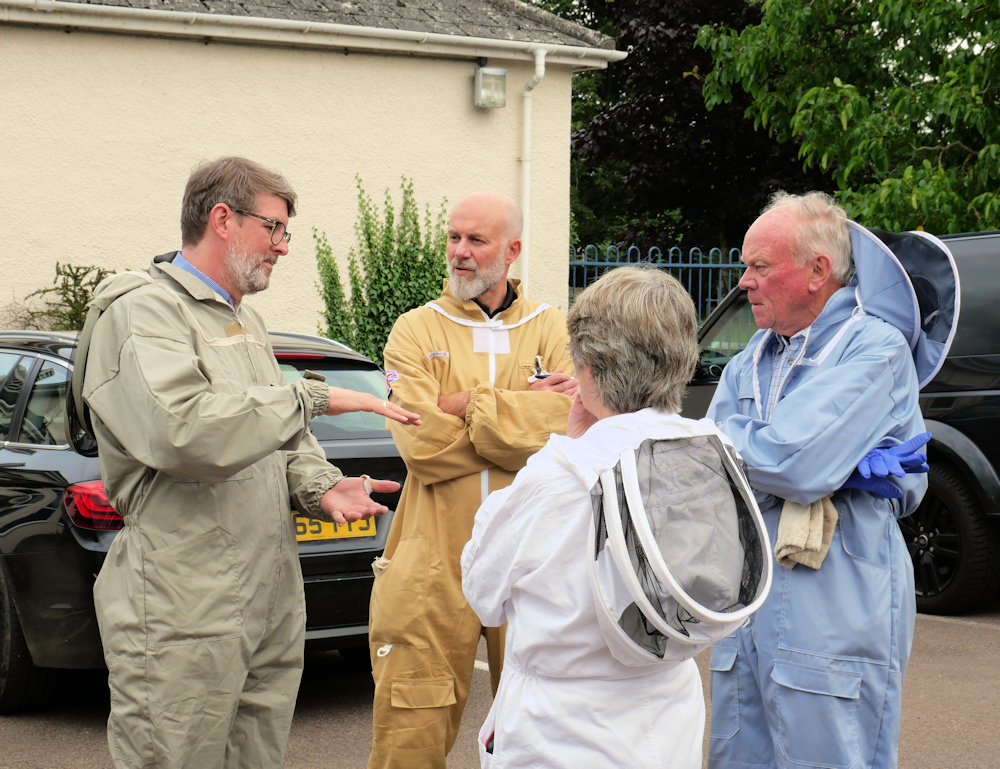
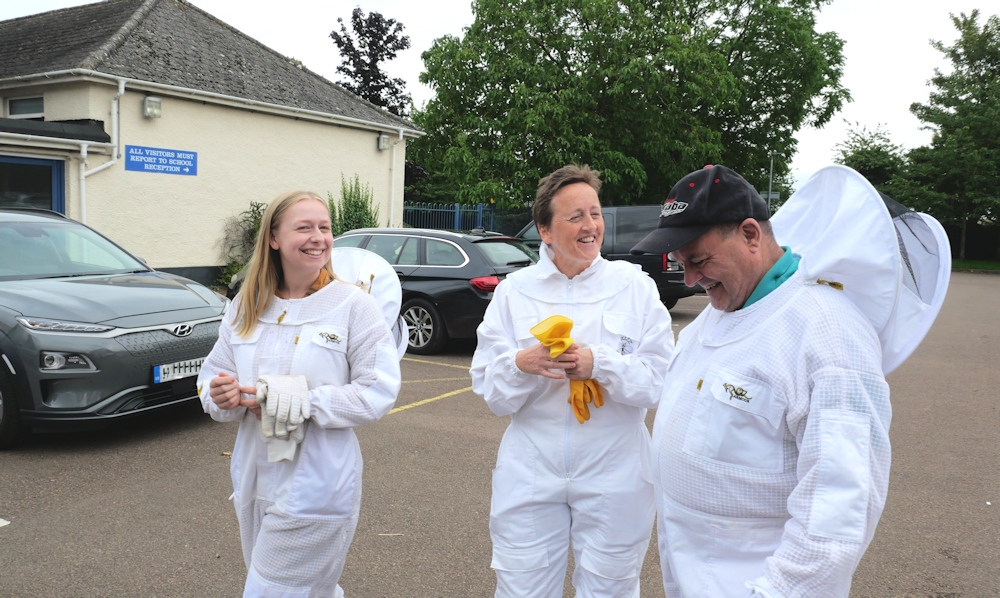
It’s then time to move into the Training Apiary and go through the brief formalities of registering everyone. It’s not just for numbers, but in case someone has a bad reaction to a sting….well it is beekeeping after all!
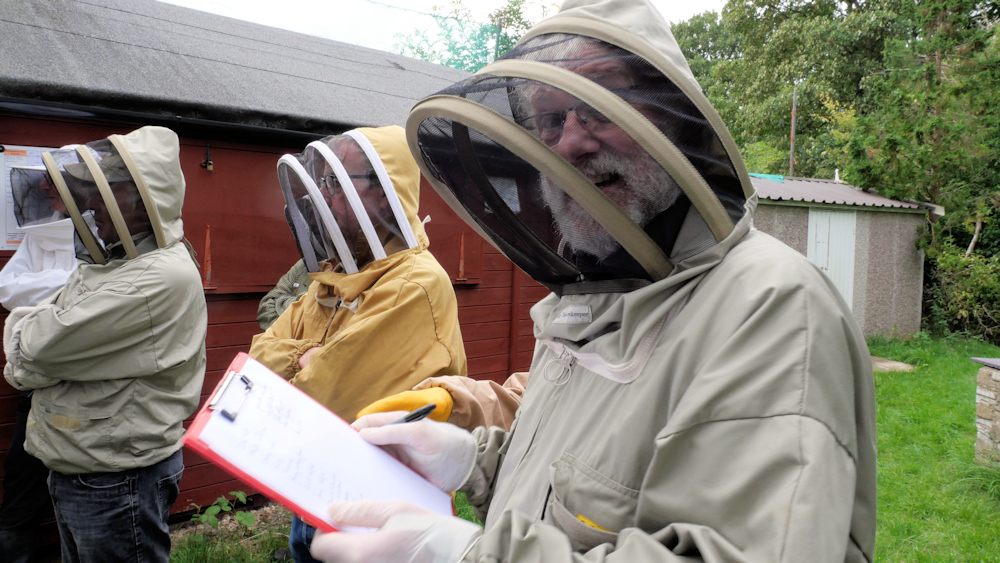
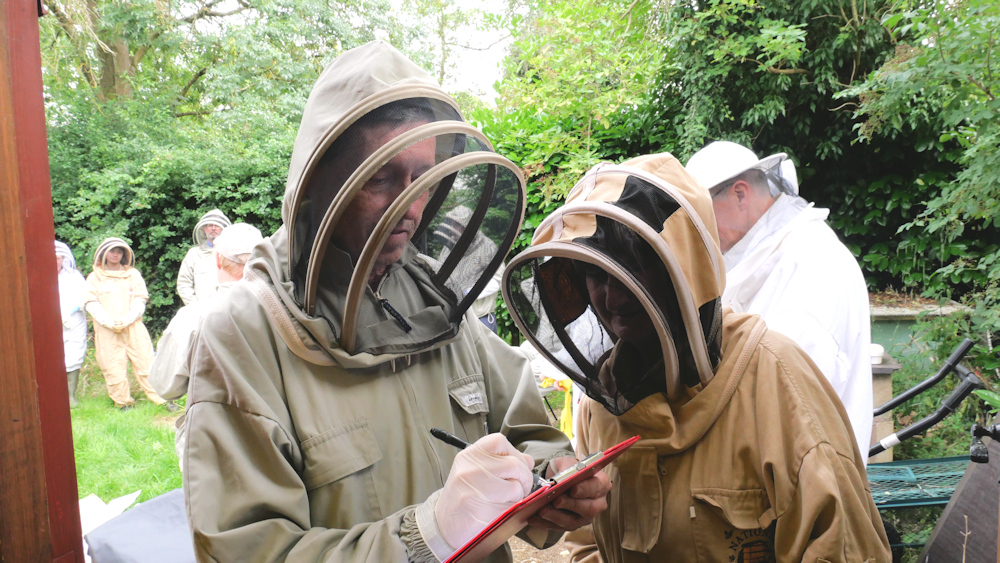
Mark’s plan for the evening was:
- Introduce varroa destructor and it’s lifecycle – the phoretic and reproductive phases
- Discuss – and show – ways to assess the level of varroa infestation in a colony
- List and discuss treatments for varroa – chemical, and Biotechnical
In what follows we won’t repeat all the detail that Mark gave us – if you want to know the detail come to the next session – but rather just highlight the key points.
Varroa Destructor
Mark described how a mature female enters a brood cell prior to capping and bites into the larvae to create a feeding point for it’s offspring. This feeding point can weaken the developing bee and is an entry point for viruses such as deformed wing virus.
Mark then showed us a brood frame that illustrates what can happen if the number of mites becomes so large that they overwhelm the colony and it dies out – a condition known as varroosis or colony collapse.
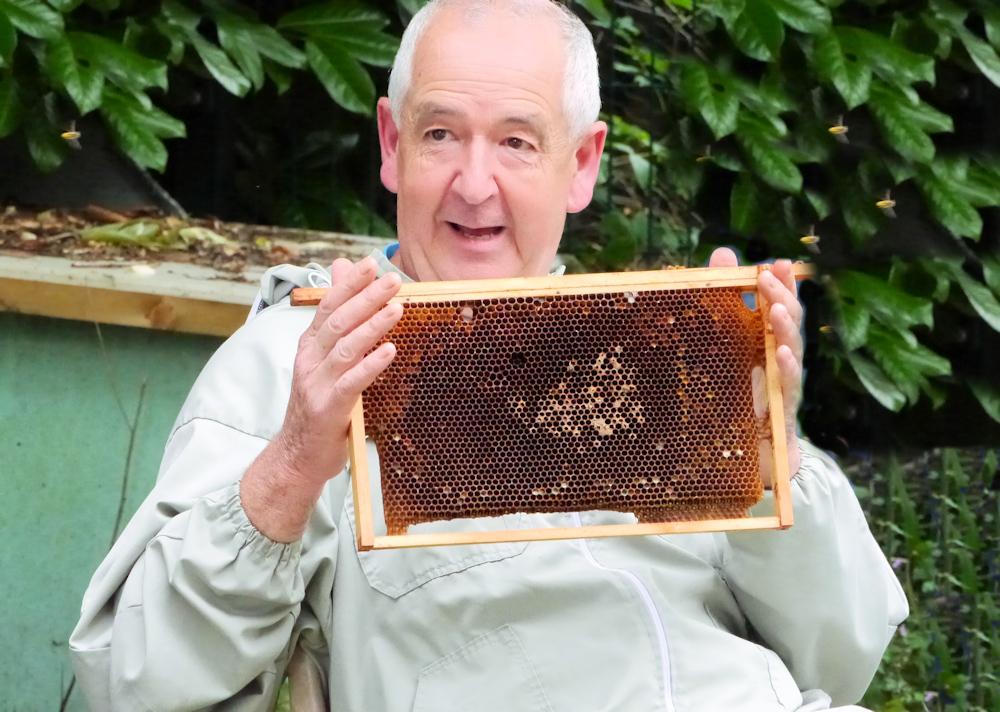
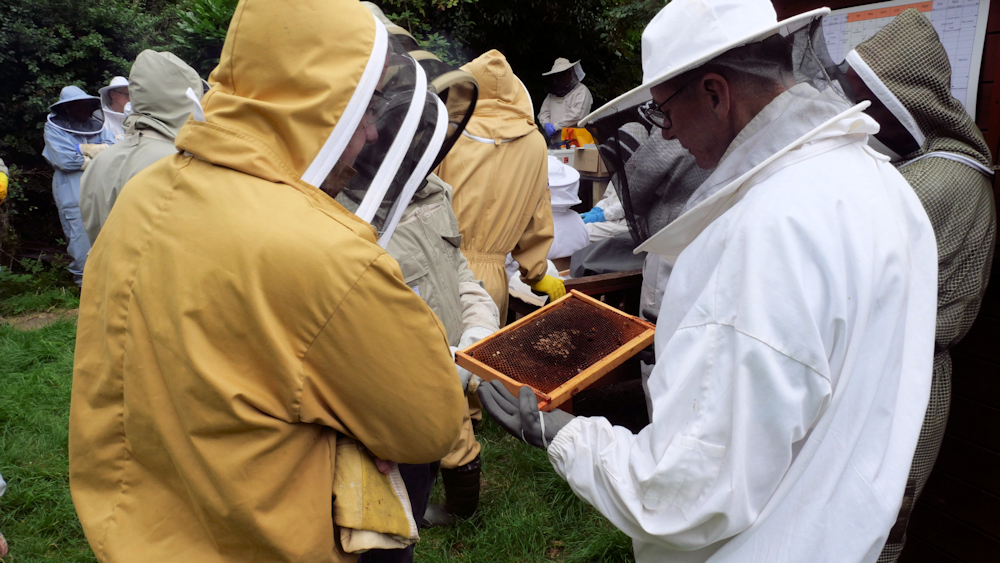
How many varroa is too many – and how to count them
The view of the NBU and UK researchers is that the varroa population should be kept below 1,000 mites / colony. Above this level the risk of damage from the mites, associated pathogens and the effect of feeding on the bees. can quickly become very significant.
How do you count the mites in a colony? Mark took us through various methods from the most accurate, an alcohol wash, through to counting mites dropping onto a varroa board under the OMF:
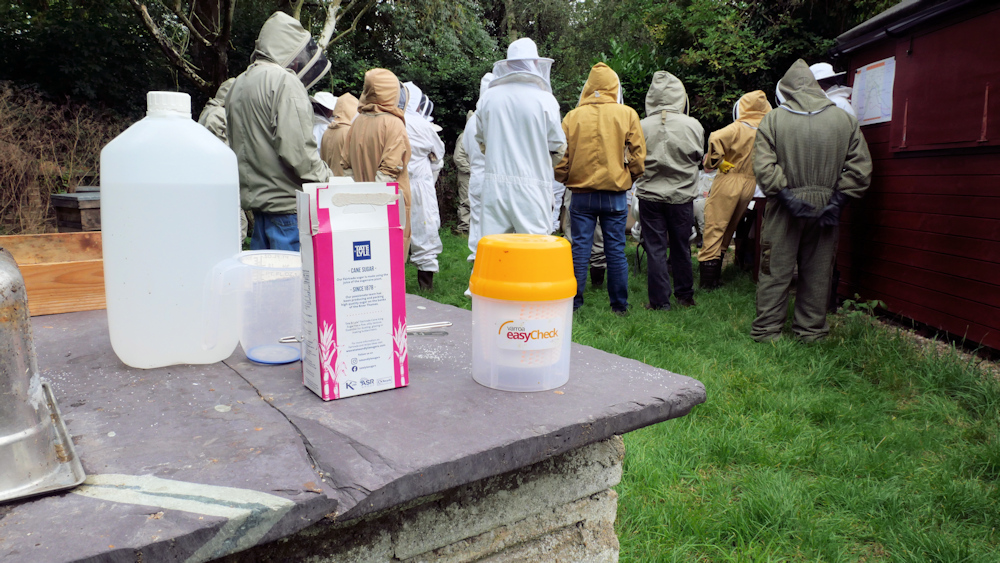
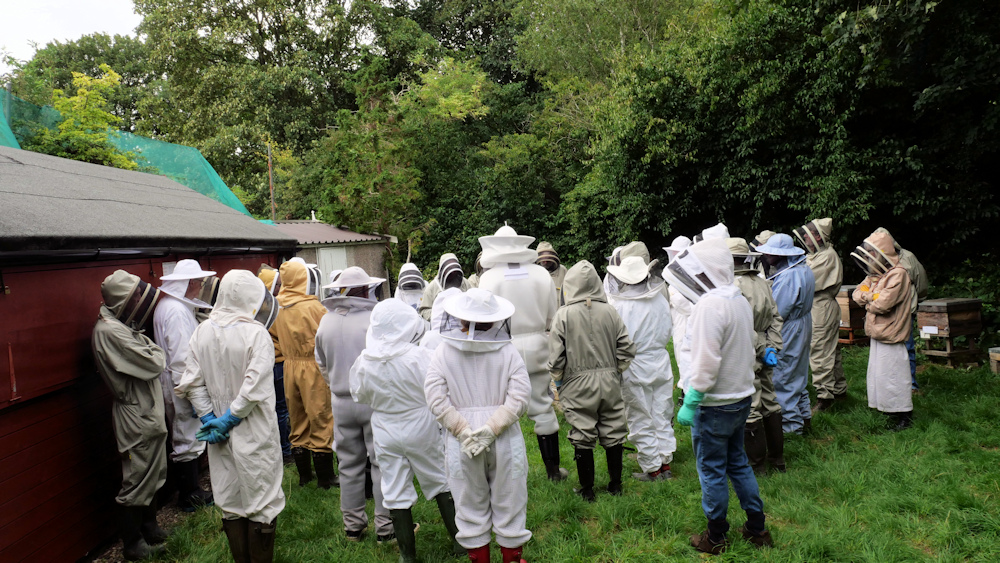
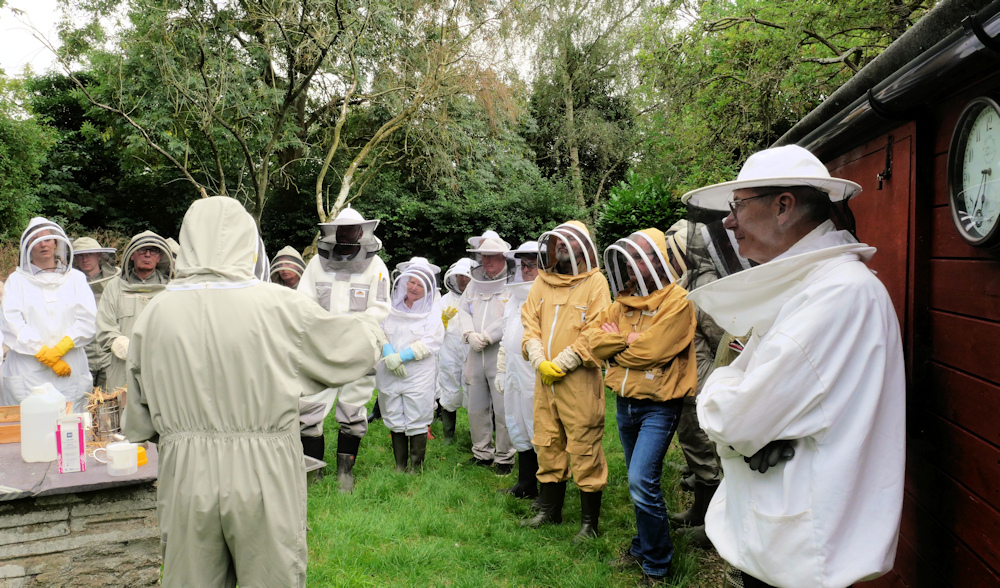
Mark also demonstrated using the alcohol wash technique on bees in the long (top bar) hive:
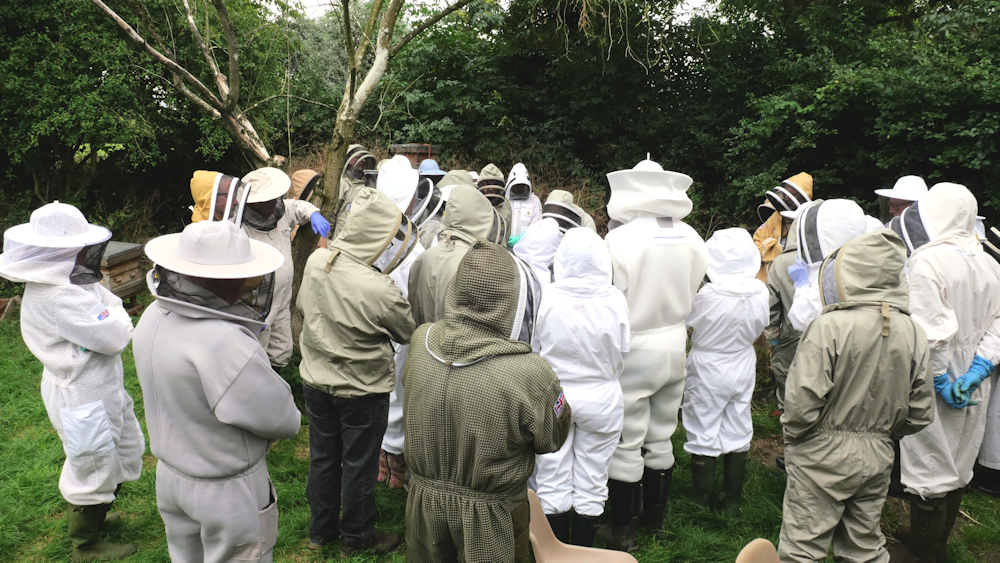

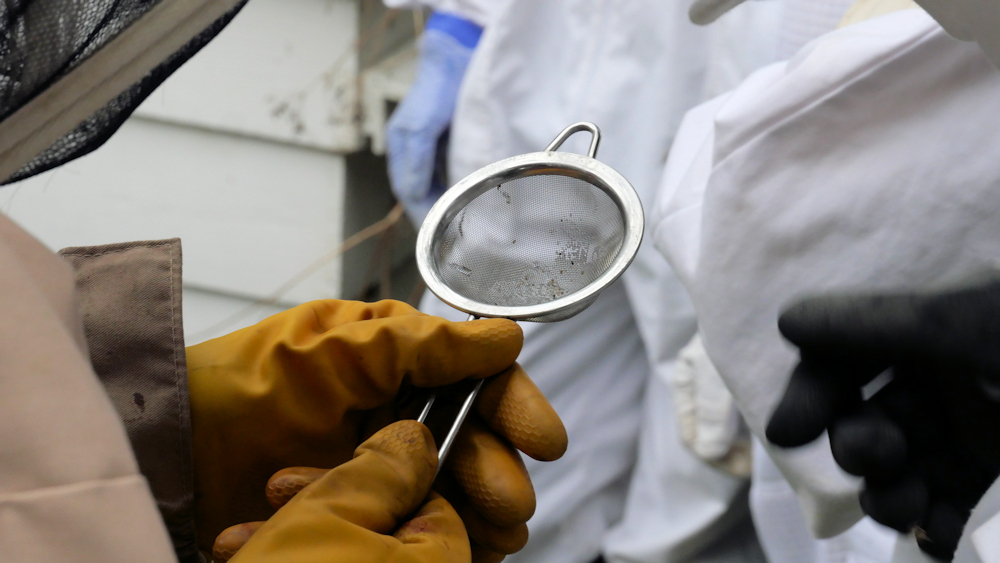
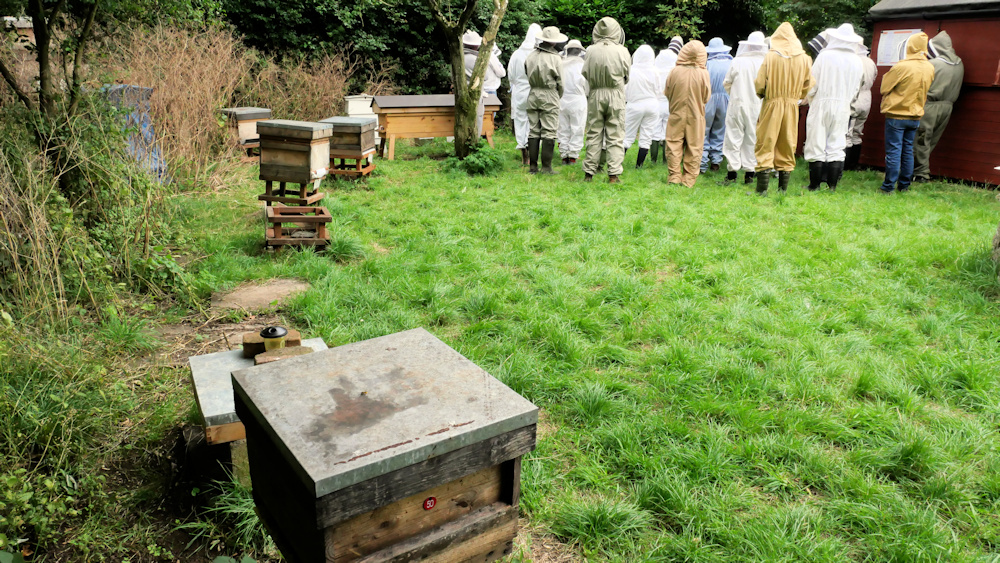
Mark wasn’t finding many varroa mites – he blames Andy Pedley’s good stewardship of the training apiary for this!
Other techniques include drone brood uncapping, where the prongs of a honey fork can be used to lift out drone pupae from their capped cells; varroa mites prefer drone brood, as Mark explained in his introductory talk. The varroa mites are easily seen against the pale drone bodies; around 100 drone cells should be inspected.

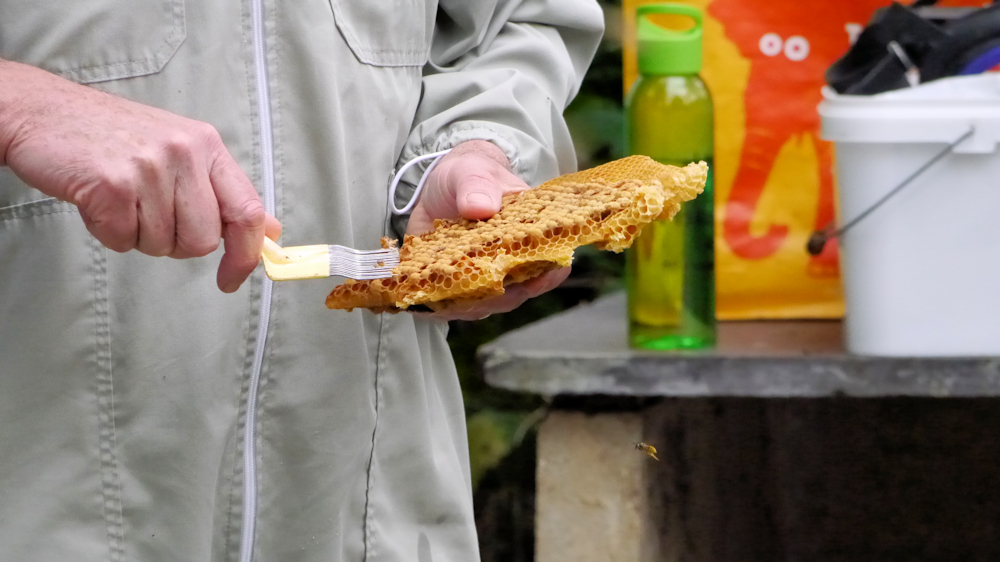
The easiest technique is mite drop counting by placing a varroa board under the OMF, leaving it in place for, say, 7 days, and then counting the number of mites on the board (it helps to make the board ‘sticky with something like Vaseline to stop the mites walking off it, and to mark a grid on the board to aid counting). We pulled out a varroa board that Andy had put under one of the colonies ready for the evening and we did spot….1 varroa mite on it (and that is the tip of a hive tool in the picture)
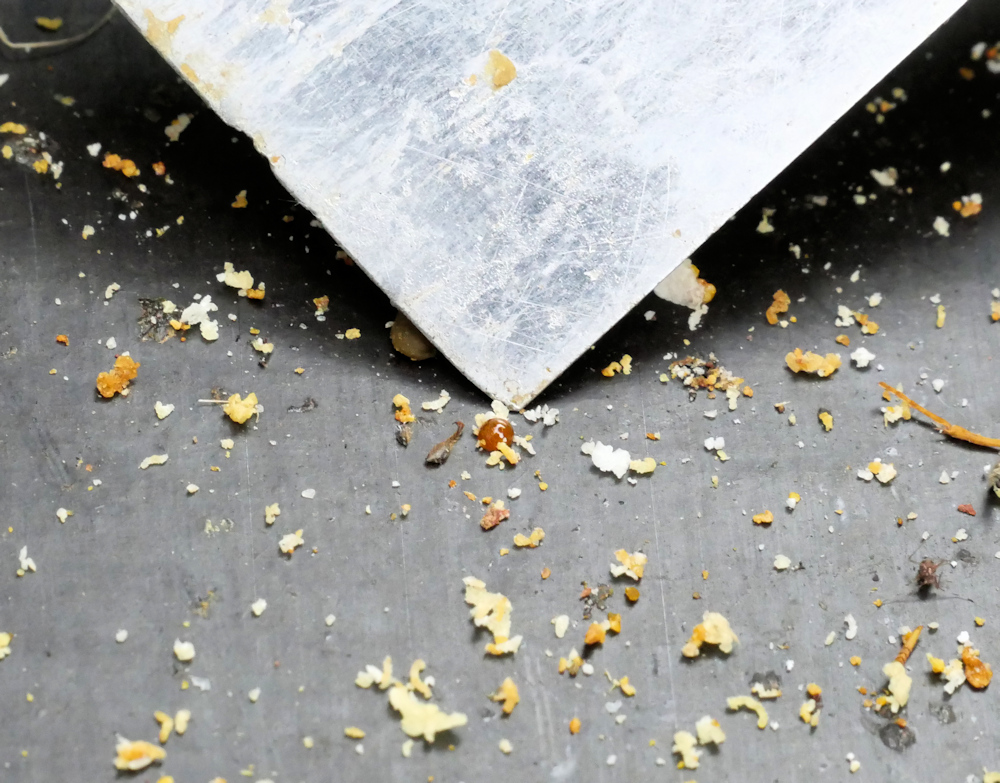
We’ve counted them – now how do we now control them?
The final part of the evening was for Mark to take us through the various ways varroa mites can be controlled within a colony. To kick this section off Mark firstly described ‘Integrated Pest Management’ (IPM), which is an approach that recognises that varroa destructor will never be eliminated but can be kept at levels where the impact on a colony is minimal, and that a variety of approaches should be used to control the mite.
The two control methods are to use Varroacides which are veterinary medicines that kill mites or otherwise reduce their numbers, and Biotechnical methods. As above we won’t go through these in detail here but just give you a flavour of what Mark covered.
Varroacides include products such as ApiVar (based on Amitraz), Apiguard (Thymol), MAQS and FormicPro (Formic Acid).
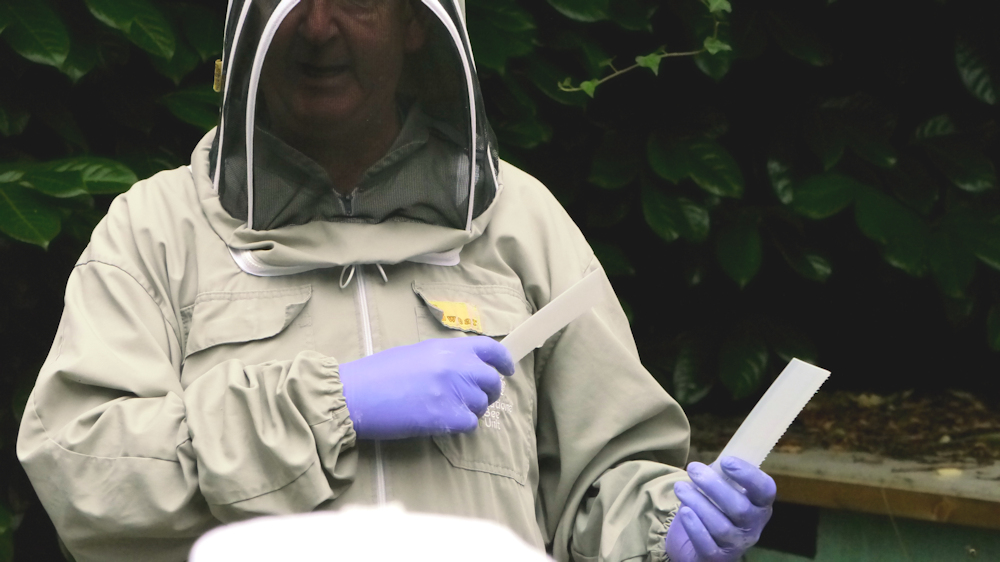

Biotechnical techniques don’t use any chemicals to remove varroa mites but essentially use knowledge of their life cycle to disrupt it. For example if a super frame is placed in a brood the bees will draw comb down from the bottom of the super frame and it will be used for drone brood. Varroa mites prefer drone brood (as they take longer to emerge so give the mite the opportunity for another one or two reproductive cycles) so once this drone brood is sealed it can be cut off and destroyed, taking the mites with it.
Other Biotechnical methods include comb trapping, an artificial swarm and a shook swarm after which the phoretic mites can be eliminated with an varroacide treatment, specifically Oxalic acid.
And finally
After the demonstrations there was a Q&A session. Mark referred several times to a recent book on varroa control and management, ‘Varroa management: a practical guide on how to manage Varroa mites in honey bee colonies‘ by Kirsty Stainton and Simon John Paterson; well worth considering getting.
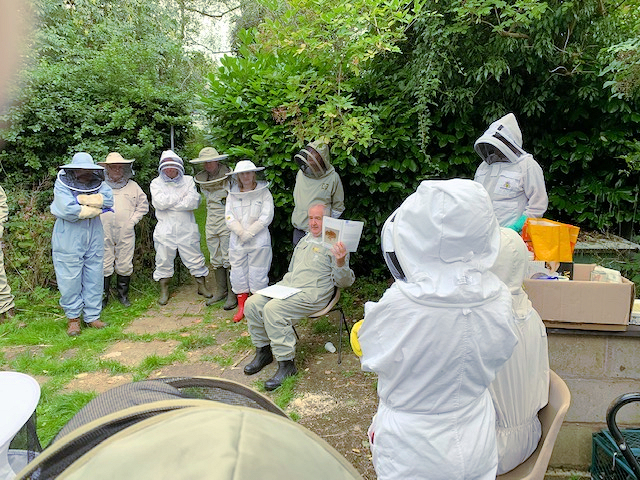
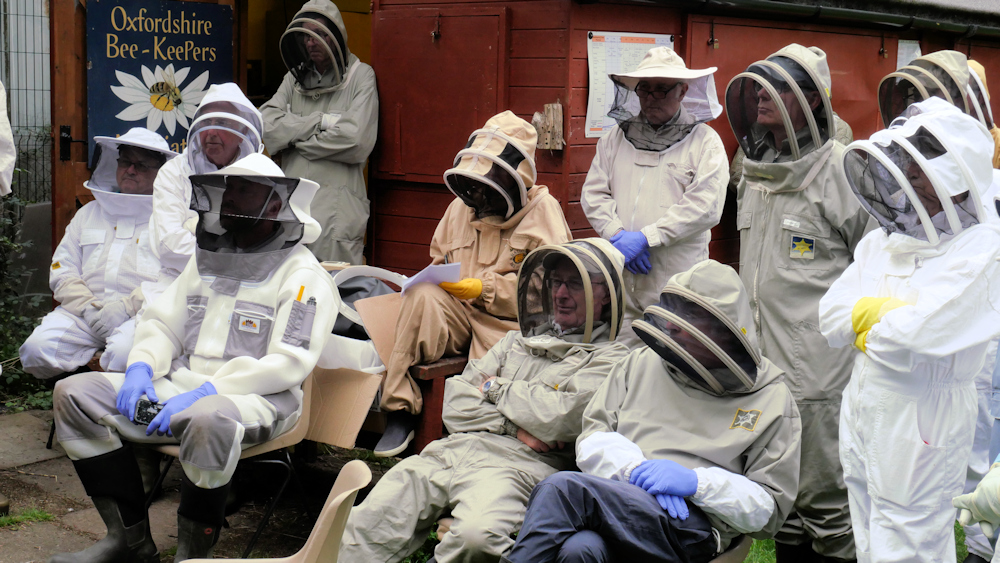
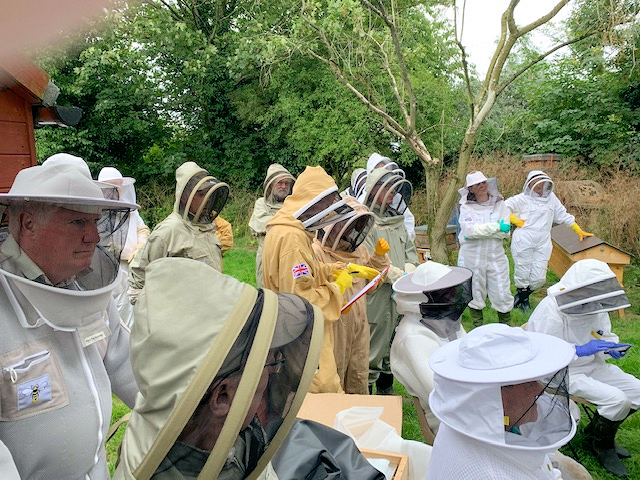
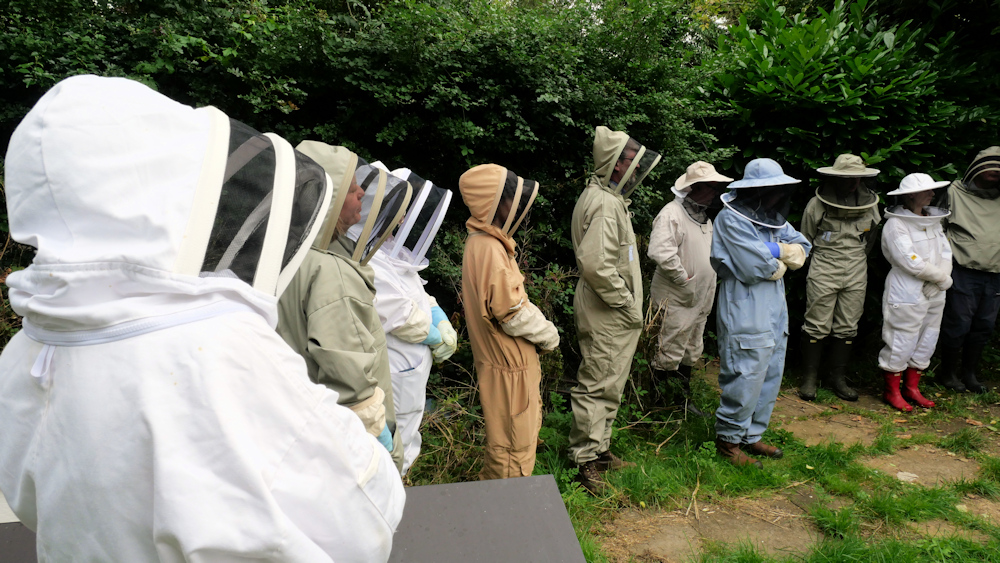
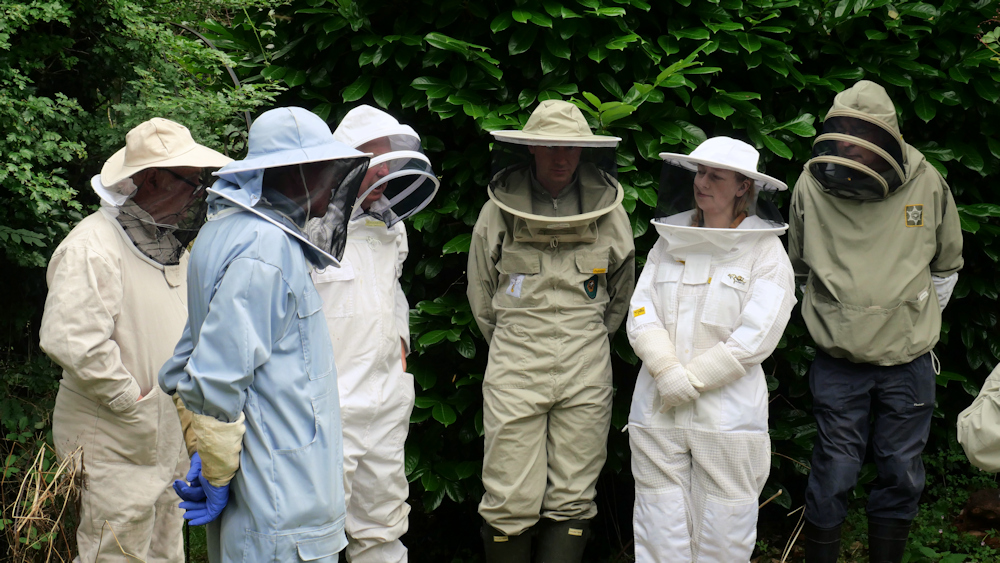
All in all a great evening with so much learned. We thank Mark Lynch for giving us his time and expertise and Andy Pedly, Training Apiary Manager, for arranging the evening.

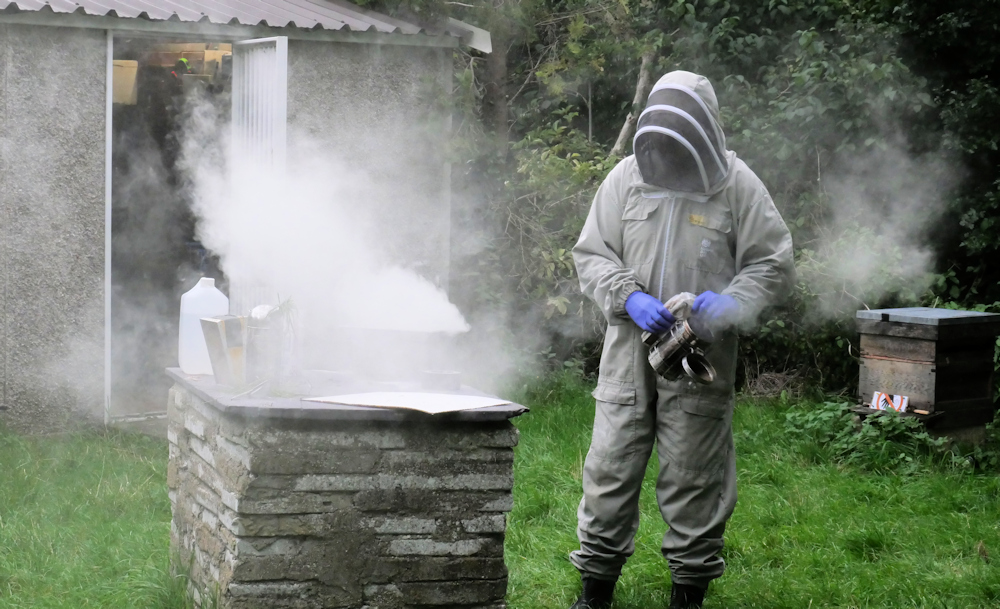
All photos credit: Gary Thomas and David Lord.